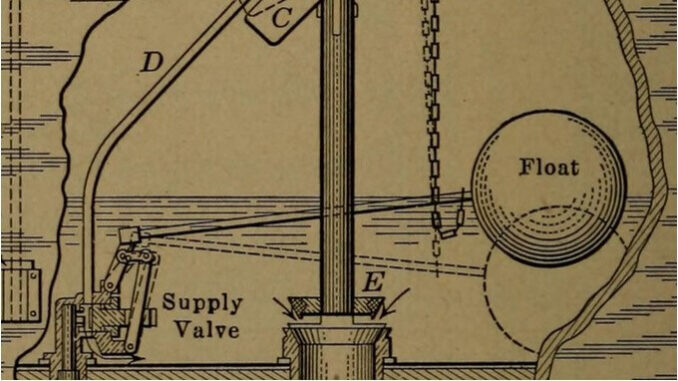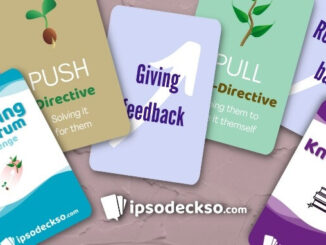
In 1858, London was suffering from the effects of ‘The Great Stink’. An increasing number of outbreaks of Cholera and other water-borne diseases, as well as an unbearable stench – so bad that Parliament itself had to close, forced the British government to take action.
The Public Health Act of 1848 had made sanitation the responsibility of the local health boards, and as a result, new houses built for the growing population of the city were all provide with ‘a means of drainage’. Unfortunately, most of those means of drainage were into streams and other water bodies draining into the Thames.
At this time, there were two main options for households selecting sanitation solutions. The earth closet, had been in use for a long time and was popular, especially in rural areas where drainage was not available. This was, at its most basic, a seat over a hole in the ground. After use, a small amount of soil or sawdust would be sprinkled into the hole. Most sophisticated versions, including the design for which the Rev. Moule applied for a patent in 1860, were more like today’s composting toilets. On the other hand, many entrepreneurs were working on designs for flushing water closets, which would carry waste ‘away’ from the home.
Categorisation determines Mindset
The government’s solution to the Great Stink was a 16-year project, headed up by Joseph Bazalgette, to build a massive network of sewers, which certainly solved the problem in Central London, but was bad news for those further downstream where the effluent was diverted – because, as we now know, there is no such thing as ‘away’.

Such a large public project, which focused on a water-based solution, and the concept of ‘away’, definitely improved the potential for the water closet, but probably the death knell of the earth closet as a widely adopted solution, came when Edward VII, gave Thomas Crapper a royal warrant to install water closets in all royal homes and palaces, ensuring that flushing water closets were now aspirational items.
But more than a simple difference in technology, the water closet and the earth closet represent two totally different mindsets. The water closet tells us that excrement is a waste product, a problem for which the solution is disposal. The earth closet tells us that it is a resource which can be utilised without waste.
The widespread adoption of the former mindset means that we have made two very much larger problems for ourselves. Our attempts at disposal have created a huge issue of waterbody pollution – itself a further cause of toxic algal blooms, eutrophication and the degradation of delicate ecosystems. Secondly, we have to replace the nutrients we remove by growing food, but do not put back, with expensive and also polluting artificial fertilisers
Learning through Play
I think that the way many adults view Play shares many of the same characteristics of the water closet mindset.
As Infants, we experience the greatest explosion of learning of our lives, we learn a language (or possibly more than one), we learn to walk and to gain and perfect gross and fine motor skills, and we learn social skills. All of this is achieved through play. Our learning is self-scaffolded, as we chose the pace at which we build on existing skills to allow us to explore new ones. We are free to experiment, within certain limits of safety. And we are even encouraged by adults who give us toys, and who actively arrange our environment to optimise the learning potential of our play. Later, but before we start formal schooling, we might even become games designers of sorts – creating simple rules about how we play, for ourselves and others, maybe even allocating points and prizes, exploring the concept of ‘winning’ and ‘losing’. In a sense, we create simple play-based assessment instruments, to compare our performance at play with others and with our own previous efforts.
Our ‘life work’, and the learning we need to carry out to achieve it, at this stage, is indistinguishable from play.
Separation of Work and Play
From then on, once we enter formal education, we start a conceptual separation of work and play. Our objectives for achievement are increasingly externalised, with others deciding for us what we should learn and how we should learn it.
There is an increasingly sense of obligation about what we do. There is both less play, and when we do play (especially in ‘play for learning’), we are often required to do so – making what we are doing more like ‘work’.

Alongside this, we are also encouraged to view true voluntary play as something that is only useful to ourselves. It is a reward, which we have to indulge ‘in our own time’, but only after we have completed the ‘work’ that others wish us to do. This sets an important precedent – that work and play do not happen in the same time or in the same places.
As adults, for many of us, that conceptual separation of ‘work’ and ‘play’ is often complete. We may have to hide our playfulness (especially in specific locations and situations) so as to be seen as proper serious grown-ups, or we may even be the people who criticise others for being childlike and playful. We may join in ‘moral panics’ about young people ‘wasting’ their time playing video games.
The Disposal of Play
If we take the water closet mindset and view play as a waste product, left over from childhood, we think that time spent playing is time that adults are not ‘productive’. We want play disposed of, sent ‘away’. This is possible even if we enjoy play and games. Because ‘away’ in this case just means a proper separation between our productive, serious, adult work life, and our leisure, when we are free to play as a reward for working hard.
So, what are the implications as play as a ‘waste’ product? The disposal and pollution analogy holds up fairly well. We first have to make efforts to dispose of play from situations and places where it doesn’t belong. This takes effort, time and expense, and involves everything from ‘policing’ workplaces (usually electronically, via proxy servers, blocking software and so on) to ensure people are not ‘having fun’ when they should be working, to designing work (including workplace learning) to be properly serious. This does not attract the objections you would expect from the employees it is inflicted on. Years of being socialised to expect this separation of work and play has worked its magic.
Suspicion of Play
Most people when asked to give a word with the opposite meaning to ‘work’, will come up with ‘play’. Employees don’t expect to have fun while doing work activities. Indeed, they may even feel suspicious that something is not ‘work’ if they do experience fun or enjoyment while doing it. They may even proactively refuse to take part in enjoyable, playful activities because to do so conflicts not only with their beliefs of what they should be doing at a certain time or in a certain place, but is also not congruent with who they believe they are.
We send our play ‘downstream’ into our leisure time, where, starved of play, creativity and autonomy of action during our work time, we binge, to get our fill in the few short hours we can, leading to the ‘pollution’ of compulsive play, and the resentment of the ‘eve of the working week’ where we dread the return to ‘work’ – being the opposite of play.
Adding Back In that which we have Taken Out
And just like the water closet situation, because we have removed the fun and play from our learning (and spent time, effort and money to do that), we have depleted and degraded both our experiences and outcomes, and just like the degraded soil, we find that it is no longer fit for purpose. The particular concern in learning is that bored learners will not engage, so we have to spend more time, effort and money to inject some fun back in – to gamify the learning to ensure that it is consumed.

We’ve probably all come across the client, or even learners, who are suspicious of play or refuse to engage with it, because they want to be seen as serious, or because ‘my industry is different’. But even people who are actively seeking gamified learning solutions, who personally enjoy games-based learning, or even those who are games-based learning practitioners, can nevertheless view play as something separate from learning. It’s not unusual to hear people saying to clients ‘The game isn’t important. What’s important is the conversations in the debriefing.’, as if the learning only happens in the properly ‘adult’ activity which follows the game. It is as if the game and the play, like the spoonful of sugar which helps the medicine go down, won’t, in itself, do you any good.
Games for ‘Engagement’
The use of games in learning is nothing new, but if we focus on the concept of ‘engagement’. The implication here is that learners may need to be tricked into consuming and interacting with learning, by the addition of game-like features. This idea of play not being itself useful is inherent in this. The learning is the point, but the play has been added and is separate – just as the spoonful of sugar that makes the medicine go down, won’t in itself do you any good.
The further and very important implication is that learning itself will not engage, and therefore needs to be ‘gamified’. The specific examples we often hear being used here focus on compliance training. Who the hell is going to willingly engage with GDPR or manual handling training, without something to sweeten the pill? It’s not possible surely that learning on these specifically boring topics could ever be fun.
But if we follow my analogy to its logical conclusion, there is an implication that if we simply didn’t remove the fun from learning, we would save ourselves a lot of time, effort and expense, by getting rid of the ‘de-funning’ and ‘re-funning’ processes, but also that if we simply followed the easiest, cheapest and least time consuming route when creating learning- that we would also have better learning.
Learning is Good for Games
As a games-based learning practitioner I have spent a lot of years telling people that games are really good for learning. But lately I have come to believe the opposite – that learning is really good for games. It is a really subtle distinction, but it does make a difference to the way I now approach designing learning games.
I believe that we, as learning professionals, have actually had to work pretty hard to suck the fun out of learning, to make learning sufficiently ‘serious’ (and correspondingly boring), that it can be considered an appropriate activity for adults.
The fun of games comes from learning. The easiest way to realise the truth of this is to think about games you like and enjoy, or if you are not a game player to think about games that are considered classics, which have stood the test of time.
A game like chess keeps players engaged, sometimes for a lifetime. Where does this depth of engagement come from? It comes from the fun of learning. People constantly strive to improve their game. They are motivated by achievement, and this achievement is facilitated by repeated practice. As they become proficient at the play of the game, they are more likely to experience ‘Flow’, a feeling that incorporates effortless competence, lack of self-awareness, and even joy. It is a situation which most learning providers would dream of – the voluntary and prolonged interaction with learning fed by positive emotional associations. It is the reason often cited for using games in learning settings.
The Building Blocks of Learning
In a book chapter I’m currently writing, I map some popular and long lasting games, such as chess, to some tried and tested learning theories – Kolb’s Learning Cycle, Knowles Andragogy and so on, to reinforce this idea. This is beyond the scope of this article and I want to move on to doing something practical – but I will give a brief taste here of how fun maps to learning.

The challenge of Chess is what attracts and keeps players, and it is a challenge of learning. Trivial games, which are soon abandoned do not contain this challenge. They are often highly dependent on chance, or on a skill which is so simple, that once mastered, there is no further learning. Noughts and Crosses (Tic Tac Toe) is an example of this. There is a strategy, but it is more like a ‘trick’ which can be remembered and implemented each time. If you come up against an opponent who also knows it, each game will result in a draw. There is no potential for exercising creativity, little potential for autonomy of action (the possible ‘moves’ are very constrained). There is no compelling ‘problem’ that needs to be solved. When mistakes are made, there is little to no opportunity to learn from them. Increased experience (unless it is the rote learning of the single solution), will not make you ‘better’ at Noughts and Crosses.
Mapping to Andragogy
These Characteristics (or lack of them, in this case), as some may recognise, relate to a learning theory. The theory of Andragogy, or Adult Learning, from Malcolm Knowles and others. Chess on the other hand, satisfies these requirements for learning which will attract and engage adults. The moves in Chess are constrained, but there are so many permutations, that there is emergent complexity, allowing creativity, autonomy and making the central problem (mating your opponent’s king, while preserving your own from the same fate), sufficiently different on each occasion that the game will never pall
Two Different Approaches
The idea that fun is just another word for learning means that we have two subtly different ways of both thinking about the relationship between fun and learning and of approaching the problem of designing experiences through which people learn and which they enjoy.
- We can deliberately design games that support specific learning outcomes
- We can create well-designed learning which will manifest as gameful or fun by definition, because when we learn, we have fun.
So, let’s try an experiment. Let’s reverse the usual design process of games-based learning. We would normally start with learning outcomes, and then use the building blocks of games; mechanics, games components like boards, dice and so on to create a game that will deliver the learning.
Suggested Workshop or Reflection Activity
Here are some ideas for a workshop design activity, or a discussion to explore the ideas in this article:
Let’s turn the usual games-based learning design paradigm on its head. I’m tasking you with creating – in the next half an hour, some fun. There are no learning outcomes – although some will definitely be achieved. The only outcome we are after is a fun experience
We will however be using learning as the building blocks for our fun experience, so the experience will have to be ‘about’ something. If you’re brave that could even be some form of compliance learning.
Your focus should be on the kinds of actions, and processes and outcomes that are the fun of learning, some of these are listed below.
- Experimentation and reflection – ref Kolb
- Discovery and unpredictability
- Repetition and practice
- Making mistakes and learning from them
- Achievement and progress
- Exercise of creativity in problem solving
- Social connection and approval
Two potential design challenges you could try here might be:
- Design a fun experience incorporating discovery and progress through group achievement
- Design a fun experience incorporating creative experimentation and learning from repeated mistakes
Alternative Challenges
You will not necessarily create ‘activities’ here, though you might. Think about the point earlier about how parents give toys to a child, or arrange the environment to optimise play. They are not mandating (usually) what form the play should take, but providing a landscape for the child to explore playfully. How might that look for adults – in workplace design or job design for example?
If you get stuck with the above activities, just think of a game you really enjoy and analyse it in terms of how its ‘fun’ comes from the building blocks of learning.
I guarantee that the number one stumbling block that you will encounter when trying these activities will be to not focus on the achievement of learning outcomes – remember that your only ‘outcome’ is to make ‘fun’. It it helps, think of the learning topic you have chosen as being the ‘theme’ of your fun experience – nobody expects to learn about running a railway when playing ‘Ticket to Ride’.
Why have I given you so many options for your session? Because true play is voluntary, and if you are to take the most learning from this, it needs to be true play.
Some potential debriefing topics – because a plenary is a proper ‘adult’ learning activity
- Was there any difference between this exercise and how you currently design games-based or gamified learning?
- What was good about not considering learning outcomes, what wasn’t?
- Designing fun and learning are the same thing – discuss.
- Well-designed learning will inevitably come to resemble games and playful design.
- When we start with learning outcomes we start with ‘content’ – and we run the risk of de-funning
- If we start with experience / learning structure, we can map that to content whenever we like
- James Bore – The Ransomeware Game - 13th February 2024
- Ipsodeckso – Risky Business - 23rd January 2024
- Review – Luma World Games - 15th December 2023





Be the first to comment